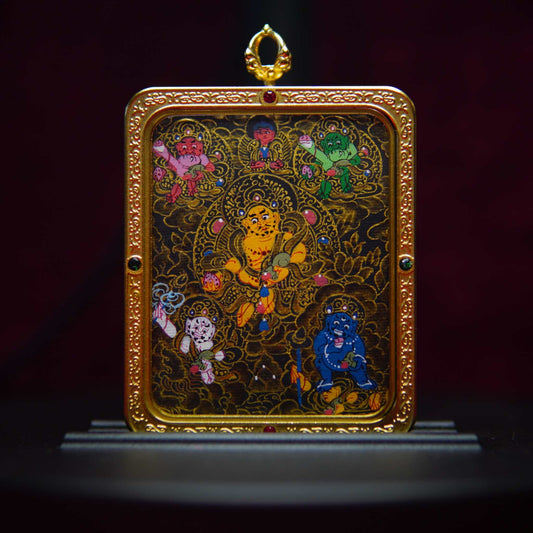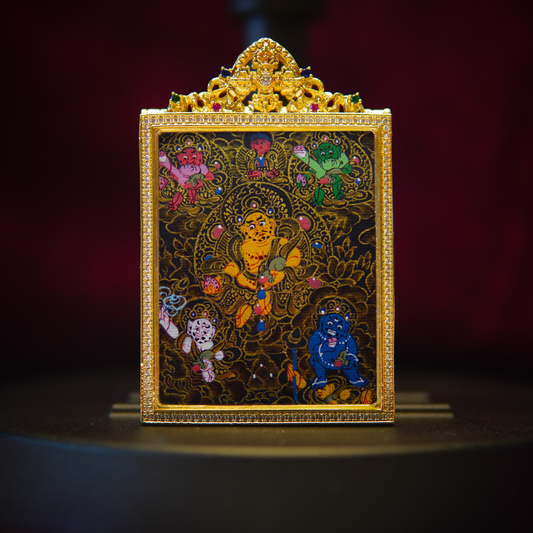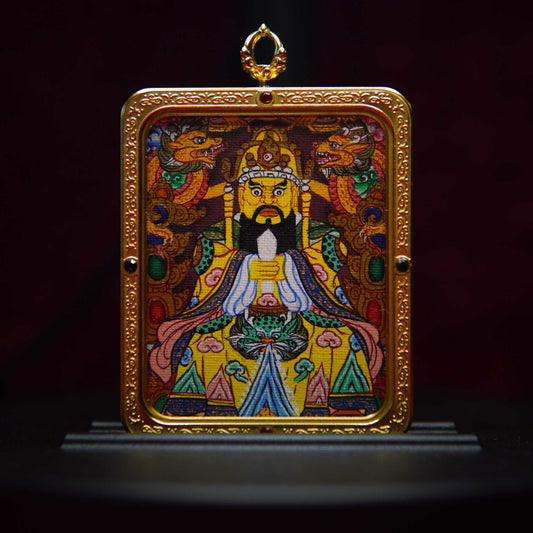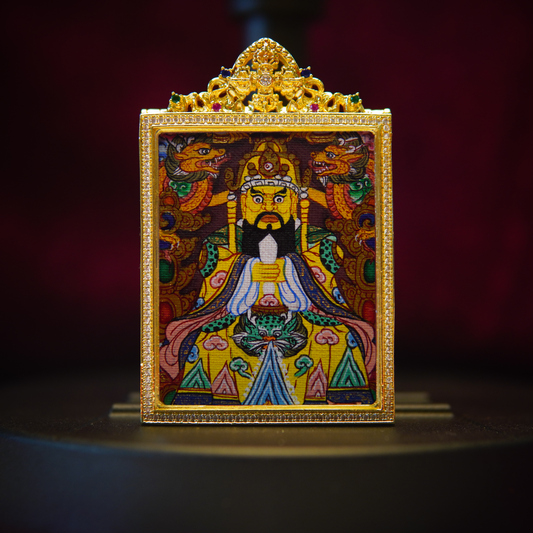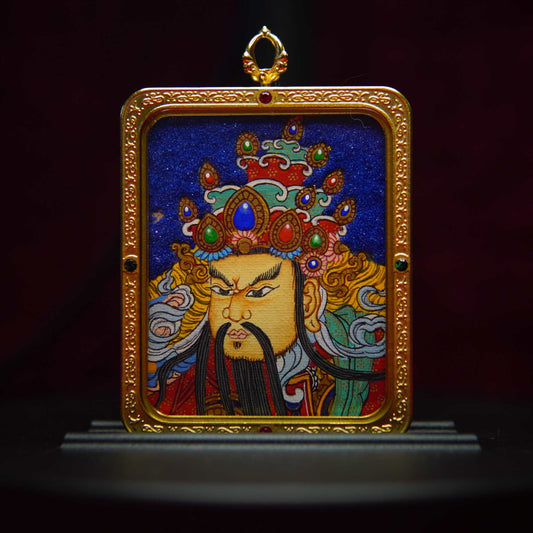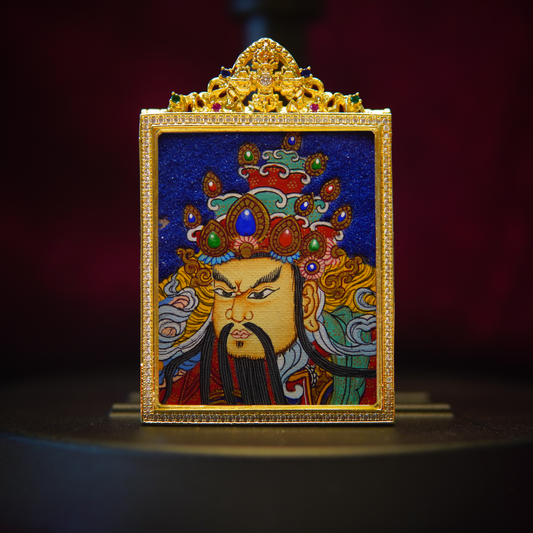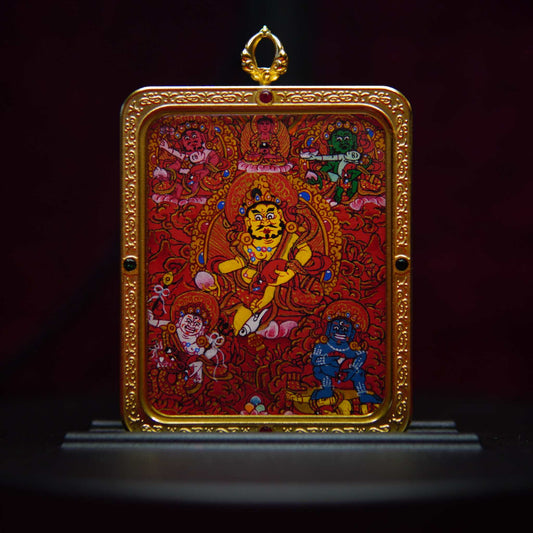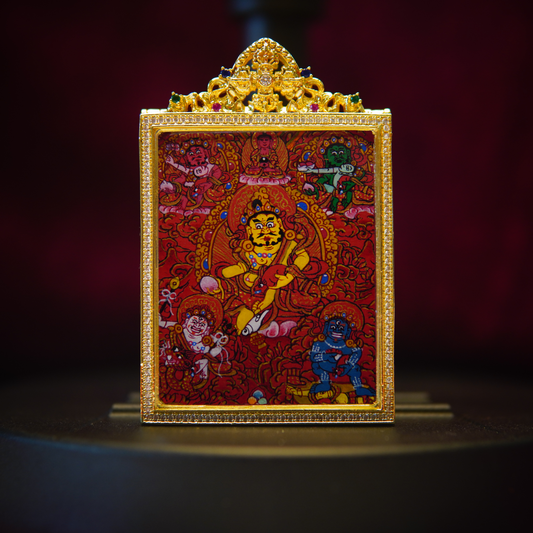Six-Road God of Wealth in Buddhism – Meaning, Symbolism, and Spiritual Protection
chenHenryWho is the Six-Road God of Wealth?
In Tibetan Buddhism, the Six-Road God of Wealth (Six Jambhalas) represents a group of six manifestations of the Buddhist Wealth Deity. Unlike the concept of a single “God of Wealth,” this tradition embodies six forms of Jambhala, each with distinct powers, colors, and attributes. Together, they guard practitioners on all “six paths” of existence—protecting humans from poverty, misfortune, and spiritual decline.
The Six-Road God of Wealth is not only a symbol of financial abundance, but also a protector of dharma, ensuring that wealth and prosperity are used wisely for generosity, compassion, and spiritual growth.

Authentic Six-Road God of Wealth Thangka Pendant Necklace
The Six Manifestations of the God of Wealth
-
Yellow Jambhala (Dzambhala Serpo)
-
The most prominent wealth deity, often depicted holding a mongoose that spits out jewels.
-
Brings wealth, stability, and generosity.
-
Ideal for business owners and those seeking long-term financial success.
-
-
White Jambhala (Dzambhala Karpo)
-
A deity of purity and compassion.
-
Removes obstacles, calms the mind, and brings peace along with prosperity.
-
Especially helpful for family harmony and emotional well-being.
-
-
Black Jambhala (Dzambhala Nagpo)
-
Fierce and powerful, subduing negative energies and spirits.
-
Brings wealth while protecting from enemies and misfortune.
-
Favored by practitioners who need strong protection.

-
-
Green Jambhala (Dzambhala Yul Karpo)
-
Bringer of fortune and good luck in opportunities.
-
Enhances career prospects, business growth, and social influence.
-
Suitable for those seeking new ventures or personal advancement.
-
-
Red Jambhala (Dzambhala Marpo)
-
Associated with power, authority, and influence.
-
Attracts wealth while empowering relationships and leadership qualities.
-
Favored by leaders, managers, and influencers.
-
-
Blue Jambhala (Dzambhala Ngagpo)
-
Protector of spiritual wealth.
-
Balances material prosperity with inner wisdom and compassion.
-
Helps practitioners avoid greed and cultivate generosity.
-
Symbolism of the Six-Road God of Wealth
-
Six Colors – Representing six types of blessings: material prosperity, spiritual wisdom, protection, compassion, opportunity, and authority.
-
Mongoose Symbol – Spitting out jewels, symbolizing endless wealth and generosity.
-
Six Paths of Existence – The Six Jambhalas protect beings across all realms, ensuring that fortune flows in every aspect of life.
Benefits of Worshipping or Wearing a Six-Road God of Wealth Pendant
-
Attracts Prosperity: Opens the path to wealth, stability, and growth in business.
-
Removes Obstacles: Clears away bad luck, financial setbacks, and negative energy.
-
Protection: Guards against misfortune, jealousy, and harmful spirits.
-
Balance: Encourages generosity, ensuring wealth brings harmony rather than greed.
-
Spiritual Growth: Connects material success with dharma practice, creating holistic well-being.
Wearing a hand-painted Six-Road God of Wealth Thangka necklace allows devotees to carry the blessings of all six deities close to the heart. The pendant becomes a portable shrine, combining sacred art, spiritual energy, and protective symbolism.
 Hand-Painted Red Thangka Six Directions Wealth Gods Pendant
Hand-Painted Red Thangka Six Directions Wealth Gods Pendant
The Six-Road God of Wealth is not only a Buddhist deity of fortune but also a profound spiritual guide. By invoking or wearing the Six Jambhalas, practitioners can harmonize wealth and wisdom, ensuring prosperity that is both material and spiritual. Whether placed on an altar or worn as a pendant, the Six-Road God of Wealth serves as a powerful reminder that true abundance comes from generosity, protection, and compassion.

